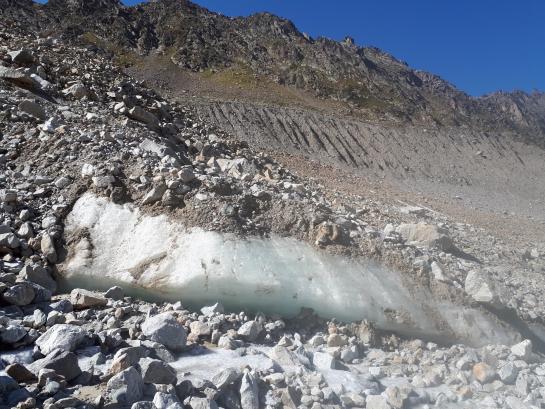GLACIERS THE CAUCASUS
Anthropogenic climate warming is believed to significantly change landscapes in mountainous areas in the coming decades. In this project, we focus on modelling the Djankuat Glacier (North Caucasus, Russian Federation), which is a WGMS reference glacier that has a broad observational network in both space and time.
We constructed a numerical flow line model for this glacier to simulate its response to past, present and future climatic change. The calculations relate to ice dynamics, supraglacial debris cover evolution and annual surface mass balances. More specifically, the objectives of this study are to construct and calibrate a coupled ice flow−mass balance−supraglacial debris cover model for the Djankuat Glacier, to reconstruct its front variations and mass balance series since 1752 AD, and to simulate the response to future climate change under different scenarios until 2100 AD.
The results can hence be used to more accurately assess the behaviour of the Djankuat Glacier as representative for the Caucasus area, including the potential side effects of its evolution such as the regulation of water resources.
